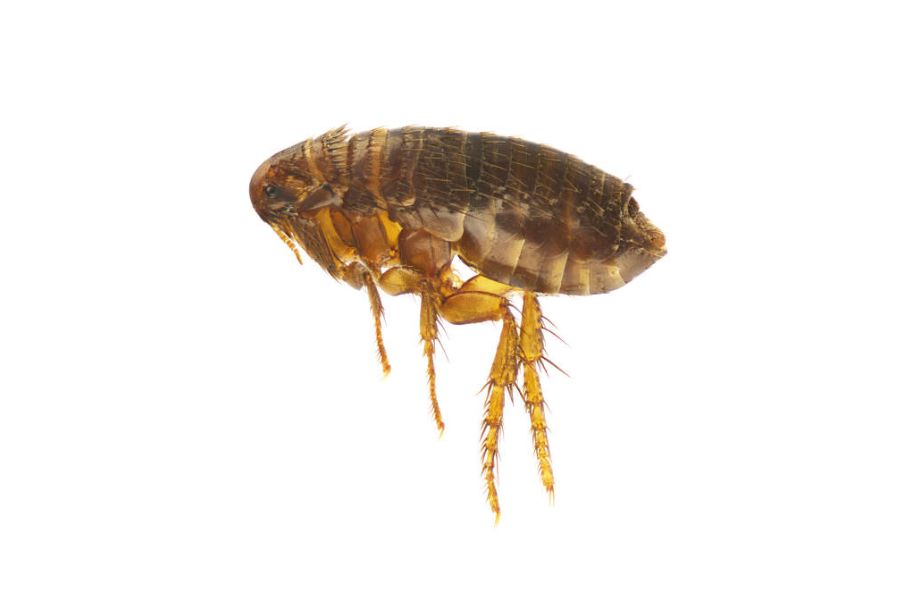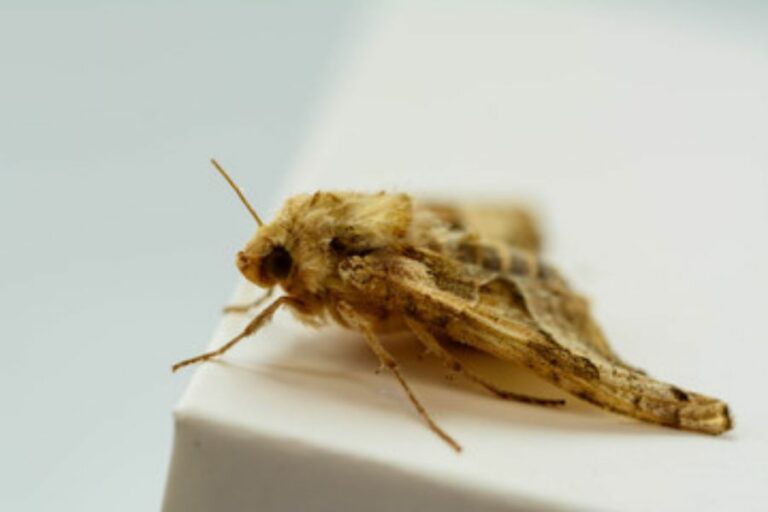Fleas: 13 Intriguing Answers

Fleas and Pet Infestations: Prevention and Control
Join us in exploring the world of fleas and pet infestations in this edition of the Flea Blog. We’ll delve into essential questions surrounding these pesky pests and provide valuable insights on prevention and control. Discover the various animals susceptible to fleas, beyond just cats and dogs. Understand how pets acquire fleas and debunk the misconception that indoor-only pets are safe. Learn actionable steps to prevent flea infestations, from grooming practices to maintaining a clean living environment. Please find out the recommended frequency of flea prevention treatments and the factors influencing them. Recognise signs of infestation in other animals and explore precautions for households with multiple infested pets. Gain knowledge on treating fleas in non-traditional pets and discover strategies to protect your furry friends in outdoor environments. Stay informed about local and regional factors that increase the risk of flea infestations. Prepare to equip yourself with the tools to combat fleas and keep your pets safe and happy.
Can fleas infest other animals besides cats and dogs?
Yes, fleas can infest many animals beyond cats and dogs. While cats and dogs are the most common hosts for fleas, these pests can invade other mammals such as rabbits, ferrets, rodents (e.g., guinea pigs, hamsters), and wildlife like raccoons and opossums. Additionally, birds, including poultry and wild birds, can be targets for fleas. Fleas can adapt to different hosts, so it’s essential to know the potential for infestations in various animals.
How do pets typically acquire fleas?
Pets typically acquire fleas through direct contact with infested animals or environments. Fleas are agile and adept at jumping, allowing them to leap onto passing hosts. They often reside in grassy areas, shrubs, or under decks, waiting for a suitable host to pass by. When a pet comes into contact with these areas or interacts with an infested animal, fleas can quickly transfer onto their fur. Fleas can also be brought into the home through items such as bedding, furniture, or clothing that have come into contact with infested animals or environments.
Can indoor-only pets also get fleas, and if so, how?
Yes, indoor-only pets can still get fleas. While indoor environments may offer some protection, fleas can still find their way into homes. Fleas can hitch a ride on humans or other animals that come in and out of the house or be brought in through infested items. Fleas are tiny and can squeeze through small gaps or be carried on clothing or shoes. Fleas can also enter homes through openings like windows, doors, or vents. Once inside, they can infest indoor-only pets, leading to an unwanted infestation.

What steps can be taken to prevent pets from getting fleas in the first place?
Several steps can be taken to prevent pets from getting fleas:
- Use flea prevention products: Consult with your veterinarian to choose a suitable product for your pet. These include topical treatments, oral medications, and flea collars or sprays. Regularly apply or administer these products according to the recommended schedule.
- Maintain a clean environment: Regularly clean and vacuum your home, paying attention to areas where your pets spend time. Wash pet bedding in hot water weekly. This helps to eliminate fleas and their eggs from the environment.
- Limit exposure to infested areas: Avoid allowing your pets to roam freely in areas with a high likelihood of flea infestations, such as tall grass, wooded areas, or places frequented by stray animals. This reduces their chances of encountering fleas.
- Groom pets regularly: Regular grooming, including brushing your pet’s fur, can help detect fleas early and remove adult fleas or flea debris. Additionally, grooming helps to stimulate the skin and coat, making it less appealing for fleas to inhabit.
- Treat the outdoor environment: If your pet spends time outdoors, consider using pet-safe flea control products in your yard or outdoor areas. This can help reduce the flea population in the immediate environment and minimise the risk of infestation.
Remember, prevention is vital to avoid the discomfort and potential health issues of flea infestations. By implementing these preventive measures, you can significantly reduce the chances of your pets getting fleas in the first place.
How often should pets be treated with flea-prevention products?
The frequency of flea prevention treatments for pets depends on several factors, including the type of product used, the pet’s age and health, the geographic location, and the prevalence of fleas in the environment. It’s essential to follow the instructions provided by the product manufacturer or consult with your veterinarian for specific guidance. Generally, most topical flea treatments are applied monthly, while some oral medications offer protection for up to three months. Regular and consistent application of flea prevention products is crucial to ensure continuous protection for your pets.
It’s worth noting that if you live in an area with a high flea population or if your pet frequently comes into contact with other animals or environments where fleas are prevalent, more frequent treatments may be necessary. Your veterinarian can provide personalised recommendations based on your pet’s needs and circumstances.
Are there any factors that may affect the frequency of pet flea treatments?
Yes, several factors can influence the frequency of flea treatments for pets. These include:
- Geographic location: The prevalence of fleas varies from one region to another. Areas with warmer climates or higher humidity tend to have a higher risk of flea infestations. If you live in a region where fleas are more common, you may need to treat your pets more frequently.
- Lifestyle and environment: If your pet spends a lot of time outdoors or frequently interact with other animals, they may have a higher exposure to fleas. Pets that visit parks, dog parks, or areas where stray animals are present are at an increased risk. In such cases, more frequent flea treatments may be necessary.
- The severity of infestation: If your pet already has an active flea infestation, it may require more frequent treatments to eliminate the existing fleas and prevent re-infestation. Your veterinarian may recommend an initial treatment protocol followed by a regular prevention schedule.
- Pet health and age: Your pet’s overall health and age can also impact flea treatment frequency. Puppies, kittens, elderly pets, or those with compromised immune systems may require more frequent treatments to protect them effectively.
It’s essential to consult with your veterinarian to determine the appropriate frequency of flea treatments for your specific pet based on these factors.
What common signs indicate other animals may be infested with fleas?
Several signs may indicate other animals are infested with fleas:
- Scratching and itching: Excessive scratching, biting, or licking of the skin is one of the most common signs of fleas. Infested animals may scratch vigorously, especially around the base of the tail, neck, or along the abdomen.
- Visible fleas or flea dirt: Fleas are small, dark-coloured insects that can sometimes be seen crawling through an animal’s fur. Flea dirt, which appears as tiny black specks resembling pepper or dirt, is flea faeces and may be visible on the fur or skin.
- Hair loss and skin irritation: Flea bites can lead to hair loss, redness, inflammation, and skin irritations in infected animals. Some pets may develop allergic reactions to flea saliva, resulting in more severe skin reactions.
- Restlessness and irritability: Infested animals may exhibit signs of restlessness, constant grooming, and general discomfort. They may also become more irritable or show behavioural changes due to the persistent itchiness caused by fleas.
If you suspect that other animals may be infested with fleas, it is crucial to take appropriate measures to prevent the spread of fleas to your pets or home.

Can fleas from one infested animal transfer to other animals in the household?
Yes, fleas can quickly transfer from one infested animal to another in the household. Fleas are highly mobile and can move from one host to another, whether between pets or pets and humans. They can jump onto a passing host, hitch a ride, and infest the new animal.
It’s crucial to understand that fleas have multiple life stages, including eggs, larvae, pupae, and adults. While adult fleas live primarily on the host animal, eggs, larvae, and pupae can be in the environment. These immature stages can develop into adults and infest other animals if not adequately controlled.
Therefore, if one pet in your household has fleas, it’s essential to check and treat all pets to prevent the spread of fleas. Treating all animals simultaneously helps break the flea life cycle and ensures effective control and eradication of fleas.
What precautions should be taken if a household has multiple pets with fleas?
If a household has multiple pets with fleas, it’s crucial to take the following precautions:
- Treat all pets: Ensure that all pets in the household are treated for fleas simultaneously. Please consult your veterinarian to choose appropriate flea prevention products for each pet based on their species, size, and health condition. Follow the recommended treatment protocols to eliminate fleas from all animals effectively.
- Clean the environment: Fleas can survive and reproduce in the environment, so it’s essential to thoroughly clean and treat your home. Vacuum all carpets, rugs, and upholstery regularly, paying attention to areas where pets spend time. Wash pet bedding, blankets, and any washable items in hot water to kill fleas and their eggs. Consider using flea control products specifically designed for the household environment, such as sprays or foggers, following the instructions carefully.
- Prevent re-infestation: After treating your pets and home, it’s essential to prevent re-infestation. This includes regularly cleaning and vacuuming the house, washing pet bedding frequently, and maintaining a clean and hygienic living environment for your pets. Additionally, continue using appropriate flea prevention products on all pets as your veterinarian recommends to prevent future infestations.
- Consult with your veterinarian: If you’re facing challenges in controlling the flea infestation or if your pets are experiencing severe discomfort, it’s advisable to consult with your veterinarian. They can provide guidance, recommend specific treatments or medications, and address any concerns or questions.
By taking these precautions, you can effectively manage and control fleas in a household with multiple infested pets, creating a healthier and more comfortable environment for both your pets and your family.
Are there any specific measures that need to be taken to treat fleas in non-traditional pets, such as reptiles or rodents?
- Treating fleas in non-traditional pets like reptiles or rodents requires specialised care and caution. It’s important to note that not all flea treatments are safe or suitable for these animals. Here are some specific measures to consider:
- Consult with a veterinarian: Seek guidance from a veterinarian experienced in treating non-traditional pets. They can recommend appropriate flea control products that are safe and effective for the specific species and provide instructions on proper application or administration.
- Avoid products intended for dogs or cats: Flea treatments formulated for dogs or cats can be toxic to non-traditional pets. Never use products meant for other animals unless specifically approved by a veterinarian for your particular pet.
- Environmental control: In addition to treating the affected pet, addressing the environment is essential. Clean and sanitise the enclosure or living space regularly to eliminate fleas and their eggs. This may involve using pet-safe cleaning products and ensuring proper hygiene practices.
Seek professional help if needed: If you’re unsure about treating fleas in non-traditional pets or if the infestation is severe, consult a veterinarian or an exotic pet specialist for professional assistance. They can provide tailored advice and treatment options based on your pet’s needs.
How can pet owners protect their pets from fleas in outdoor environments?
Protecting pets from fleas in outdoor environments requires a combination of preventive measures. Here are some strategies to consider:
- Use flea prevention products: Consult with your veterinarian to select appropriate flea prevention products for your pet, such as spot-on treatments, collars, or oral medications. These products can protect against fleas and help repel or kill them before they can infest your pet.
- Avoid high-risk areas: Try to steer clear of areas known to be infested with fleas, such as tall grass, wooded areas, or places where stray animals frequent. When walking your dog, keep them on designated paths or sidewalks to minimise exposure to flea-prone areas.
- Regular grooming and inspection: Routinely groom your pets, especially after they’ve been outdoors. Brush their fur to remove any fleas or flea debris, and inspect their skin for signs of infestation or bites. Promptly remove any visible fleas and dispose of them properly.
- Create a barrier: Consider creating a physical barrier to prevent fleas from jumping onto your pets. This can be achieved through pet-safe fencing or by keeping your pets on elevated surfaces, such as raised beds or designated outdoor areas.
- Yard maintenance: Maintain a well-manicured yard by regularly mowing the grass, trimming shrubs, and removing debris where fleas may hide. Consider using pet-safe outdoor flea control products, such as sprays or granules, to treat your yard and create a less hospitable environment for fleas.
Are there any local or regional factors that may increase the risk of flea infestations in pets?
Several local or regional factors can increase the risk of pet flea infestations. These factors include:
- Climate: Fleas thrive in warm and humid environments. Regions with hot and humid climates provide ideal flea reproduction and survival conditions, leading to higher flea populations and an increased risk of infestation.
- Wildlife population: Wildlife, such as raccoons, squirrels, or feral cats, can introduce fleas into an area. If these animals frequent your yard or neighbourhood, they can bring fleas, increasing the likelihood of pet infestation.
- High-density pet areas: Areas with a high population of pets, such as apartment complexes or neighbourhoods with many pet owners, may have an increased risk of flea infestations. Fleas can quickly spread from one pet to another, incredibly close.
- Seasonal variations: Flea activity can vary seasonally. In some regions, flea populations may peak during warmer months, while in others, fleas can be present year-round due to milder climates. Understanding the seasonal patterns of fleas in your area can help you implement appropriate preventive measures.
- Travel or relocation: Traveling to areas with a higher prevalence of fleas or moving to a new region can expose pets to a different flea population. It’s essential to be aware of the flea risks in your new location and take preventive measures accordingly.
By considering these local or regional factors and implementing appropriate preventive measures, pet owners can reduce the risk of flea infestations and provide a safer environment for their pets.





